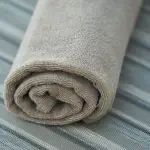Do you know if heavyweight cotton shrinks?
Understanding the behavior of heavyweight cotton when it comes to shrinkage is essential for maintaining the quality and fit of your garments. Factors such as fabric construction, weave, and finishing processes all play a role in determining the extent to which heavyweight cotton will shrink.
In this guide, we will delve into the intricacies of heavyweight cotton shrinkage, debunk common myths, and provide expert tips for minimizing shrinkage. By the end, you will have a comprehensive understanding of how to care for heavyweight cotton garments to ensure they maintain their shape and size over time.
Key Takeaways
- Heavyweight cotton fabric may shrink when exposed to heat, water, and agitation.
- Cold or lukewarm water should be used for washing heavyweight cotton.
- Gentle agitation and air-drying are recommended to minimize shrinkage of heavyweight cotton.
- Pre-shrunk heavyweight cotton fabric reduces the potential for shrinkage.
Understanding Cotton Shrinkage
When washing heavyweight cotton, it's important to be aware of the potential for shrinkage due to the natural properties of the fabric. Cotton fibers have a natural tendency to contract when exposed to heat, water, and agitation, which are common elements in the washing process.
Understanding fabric behavior is crucial in preventing unwanted shrinkage. To minimize shrinkage, it's essential to employ fabric care techniques that mitigate these factors. Using cold or lukewarm water, gentle agitation, and air-drying rather than machine drying can help maintain the original dimensions of heavyweight cotton garments or fabrics.
Additionally, pre-treating the fabric with a fabric relaxer or conditioner before washing can help reduce the likelihood of shrinkage. These products work by relaxing the fibers and minimizing the impact of heat and water during the washing process.
Understanding how to properly use these fabric care techniques is essential for mastering the art of preserving heavyweight cotton items. By being mindful of fabric behavior and employing appropriate care methods, you can effectively manage shrinkage and prolong the lifespan of your heavyweight cotton pieces.
Factors Affecting Cotton Shrinkage
When it comes to understanding the factors that affect cotton shrinkage, it's crucial to consider the fabric composition and the washing and drying methods.
The type of fabric and its blend can significantly impact how much it will shrink after washing.
Additionally, the temperature, agitation, and drying process used can also influence the extent of shrinkage.
Fabric Composition and Shrinkage
To minimize shrinkage in heavyweight cotton, you should always wash it in cold water and avoid using high heat in the dryer. When considering fabric shrinkage, the composition of cotton plays a significant role. Understanding the factors affecting cotton shrinkage can help you make informed decisions when caring for your heavyweight cotton garments.
Here are a few key points to consider:
- Cotton Composition:
- The percentage of cotton in the fabric blend can affect the level of shrinkage. Higher cotton content typically results in more significant shrinkage after washing.
- Fabric Construction:
- The method used to weave or knit the fabric can impact its shrinkage behavior. Tighter weaves may lead to more shrinkage compared to looser weaves.
- Pre-Shrunk Fabric:
- Some heavyweight cotton fabrics may be pre-shrunk during the manufacturing process, reducing the potential for further shrinkage after purchase.
Washing and Drying Methods
You can minimize shrinkage in heavyweight cotton by following these steps:
- Wash the cotton in cold water to prevent shrinkage.
- Avoid high heat in the dryer, as this can cause the cotton to shrink.
- Use a gentle cycle and a mild detergent when washing heavyweight cotton to reduce agitation and friction.
- Consider using a fabric conditioner to further relax the fibers and minimize shrinkage potential.
After washing, follow these steps:
- Carefully shake out the fabric to reduce wrinkles.
- Reshape the garment to its original dimensions.
When it comes to drying techniques, keep the following in mind:
- Air drying is the gentlest option for heavyweight cotton, as it minimizes shrinkage and helps preserve the fabric's integrity.
- If you prefer using a dryer, select a low or medium heat setting to minimize shrinkage.
- Remove the cotton promptly when dry to prevent over-drying, which can lead to shrinkage.
Types of Cotton Prone to Shrinking
Certain types of cotton are more prone to shrinking than others. High thread count varieties, Pima and Egyptian cotton, and densely woven fabrics fall into this category. These types of cotton have a tighter weave and are more susceptible to shrinkage when exposed to heat and moisture.
Understanding the characteristics of these cotton varieties can help you take necessary precautions to prevent excessive shrinkage and maintain the quality of your garments.
High Thread Count
When washing high thread count cotton, be mindful that it can shrink significantly if not handled properly. This type of cotton is made with superior thread quality, resulting in a denser weave and exceptional fabric durability. When subjected to improper washing or drying methods, the densely woven fibers are more prone to shrinking due to their compact nature.
To prevent excessive shrinkage and maintain the fabric's integrity, it's crucial to adhere to specific care instructions tailored to high thread count cotton. Here are key considerations:
- Use cold water and mild detergent to minimize heat exposure.
- Avoid high heat when drying, opt for air drying or low heat settings.
- Consider pre-washing the fabric to allow for initial shrinkage before cutting or sewing.
Pima and Egyptian
Both Pima and Egyptian cotton are known for their exceptional softness and high quality, but they are prone to significant shrinkage if not properly cared for. When it comes to fabric care, it's crucial to understand the characteristics of these heavyweight cotton types. Despite common shrinkage myths, Pima and Egyptian cotton are susceptible to shrinkage due to their long staple fibers. Here's a comparison to help you understand their shrinkage potential:
| Cotton Type | Shrinkage Potential | Fabric Care |
|---|---|---|
| Pima Cotton | Moderate | Gentle washing, low heat drying |
| Egyptian Cotton | High | Cold water washing, air drying |
To maintain the luxurious feel and fit of Pima and Egyptian cotton, follow these fabric care guidelines carefully and dispel the shrinkage myths associated with heavyweight cotton.
Densely Woven Fabrics
If you have heavyweight cotton fabrics that are densely woven, you may be concerned about their potential for shrinking. Densely woven fabrics, such as canvas, twill, and denim, are known for their durable and heavyweight properties, which make them prone to shrinking when not cared for properly.
Here are the woven textile properties that make these fabrics more susceptible to shrinkage:
- Tight Weave: Densely woven fabrics have a tighter weave, leaving less room for the fibers to move and adjust during washing and drying. This tight weave contributes to the fabric's durability but also increases the likelihood of shrinkage.
- High Thread Count: Fabrics with a high thread count, common in densely woven textiles, are more likely to shrink due to the dense arrangement of fibers.
- Higher Density: The high density of fibers in densely woven fabrics leads to less flexibility, making them more prone to shrinking.
Heavyweight Cotton Shrinkage Myths
Despite popular belief, heavyweight cotton doesn't always shrink significantly in the laundry. It's a common myth that all heavyweight cotton fabrics will shrink dramatically, but this isn't always the case. Understanding fabric care and shrinkage prevention methods can help dispel these myths and preserve the integrity of your heavyweight cotton garments.
Fabric care plays a crucial role in preventing excessive shrinkage in heavyweight cotton. Proper washing and drying techniques, such as using cold water, gentle cycle, and air-drying, can help minimize shrinkage. Additionally, avoiding high heat during the drying process can significantly reduce the risk of shrinkage in heavyweight cotton fabrics.
Shrinkage prevention is also achievable through pre-treating heavyweight cotton fabrics before washing. Pre-treating involves soaking the fabric in cold water and allowing it to air dry before the first wash. This process can help stabilize the fabric and minimize potential shrinkage.
Tips for Minimizing Cotton Shrinkage
To minimize cotton shrinkage in heavyweight fabrics, you can implement proper washing and drying techniques, which are essential for preserving the fabric's integrity and fit. Follow these fabric care techniques for minimizing shrinkage:
- Use cold water: When washing heavyweight cotton items, opt for cold water instead of hot water. Hot water can cause the cotton fibers to shrink due to increased agitation and temperature. Cold water helps in minimizing this effect.
- Gentle cycle: Utilize the gentle cycle setting on your washing machine. This reduces the stress on the fabric and minimizes the chances of shrinkage, especially for heavyweight cotton garments.
- Air dry or low heat: After washing, air-dry heavyweight cotton items whenever possible. If using a dryer, select a low-heat setting. High heat can lead to shrinkage, so it's crucial to be mindful of the drying process.
Washing and Drying Heavyweight Cotton
When washing and drying heavyweight cotton, follow specific care instructions to maintain the fabric's integrity and minimize shrinkage.
Start by sorting your laundry, separating heavyweight cotton items from lighter fabrics to prevent damage caused by friction. Use a mild detergent and opt for a gentle or delicate wash cycle to minimize agitation.
Avoid hot water, as it can exacerbate shrinkage, and instead, choose cold or lukewarm water to wash your heavyweight cotton items. When drying, tumble dry on low heat to prevent excessive shrinkage and maintain the fabric's quality. Remove the items promptly from the dryer to prevent wrinkles and potential damage from over-drying.
If air-drying, reshape the garments and lay them flat to dry to retain their original shape. It's essential to check the care label on each garment for specific instructions, as some heavyweight cotton items may require different washing techniques.
Conclusion and Final Thoughts
In conclusion, remember to always follow the care instructions on your heavyweight cotton items to maintain their quality and minimize shrinkage. Proper fabric care is essential to prevent shrinkage and extend the lifespan of your heavyweight cotton garments.
Here are some final thoughts to keep in mind:
- Shrinkage Prevention
- Use cold water and a gentle detergent when washing heavyweight cotton to reduce the likelihood of shrinkage.
- Avoid high heat when drying heavyweight cotton items; instead, opt for air drying or tumble dry on a low setting to prevent shrinkage.
- Consider pre-shrinking heavyweight cotton fabric before sewing to minimize potential shrinkage of the finished garment.
Remember that prevention is key when it comes to minimizing shrinkage in heavyweight cotton. By taking extra care during the washing and drying process, you can maintain the integrity and size of your garments. Following these fabric care practices will help you enjoy your heavyweight cotton items for a longer period while keeping them in excellent condition.
Frequently Asked Questions
Can Heavyweight Cotton Be Pre-Shrunk Before It Is Made Into Clothing or Fabric?
You can pre-shrink heavyweight cotton before fabric construction to control shrinkage. This process ensures that the fabric retains its original dimensions after washing. By pre-shrinking, you can minimize the possibility of further shrinkage in the final clothing or fabric.
Are There Any Specific Washing Methods or Products That Can Help Prevent Heavyweight Cotton From Shrinking?
To prevent shrinkage in heavyweight cotton, use cold water and mild detergent for fabric care. Avoid high heat in the dryer and air dry instead. Gently stretch the fabric after washing to maintain its original size and shape.
How Does the Thread Count of Heavyweight Cotton Affect Its Shrinkage Potential?
Higher thread count in heavyweight cotton generally indicates better fabric quality and durability. With increased thread count, the fabric becomes denser and less prone to shrinkage, as long as proper washing and drying techniques are followed.
Are There Any Specific Environmental Factors That Can Contribute to the Shrinkage of Heavyweight Cotton?
Environmental impact can contribute to heavyweight cotton shrinkage. Factors like high heat, frequent laundering, and harsh detergents may affect fabric care. Understanding these influences can help you preserve the quality of your heavyweight cotton garments.
Are There Any Industry Standards or Regulations Regarding the Labeling of Heavyweight Cotton Products With Regards to Potential Shrinkage?
Labeling regulations for heavyweight cotton products require accurate information regarding potential shrinkage. Pre-shrunk options should be clearly indicated. Industry standards ensure consumers can make informed decisions, and reputable brands prioritize compliance with these regulations.
- How Does Ring Spun Cotton Affect Garment Fit and Shape Retention? - August 13, 2024
- What Are the Challenges in Producing Ring Spun Cotton? - August 13, 2024
- Is Ring Spun Cotton Suitable for Plus-Size Clothing? - August 13, 2024







